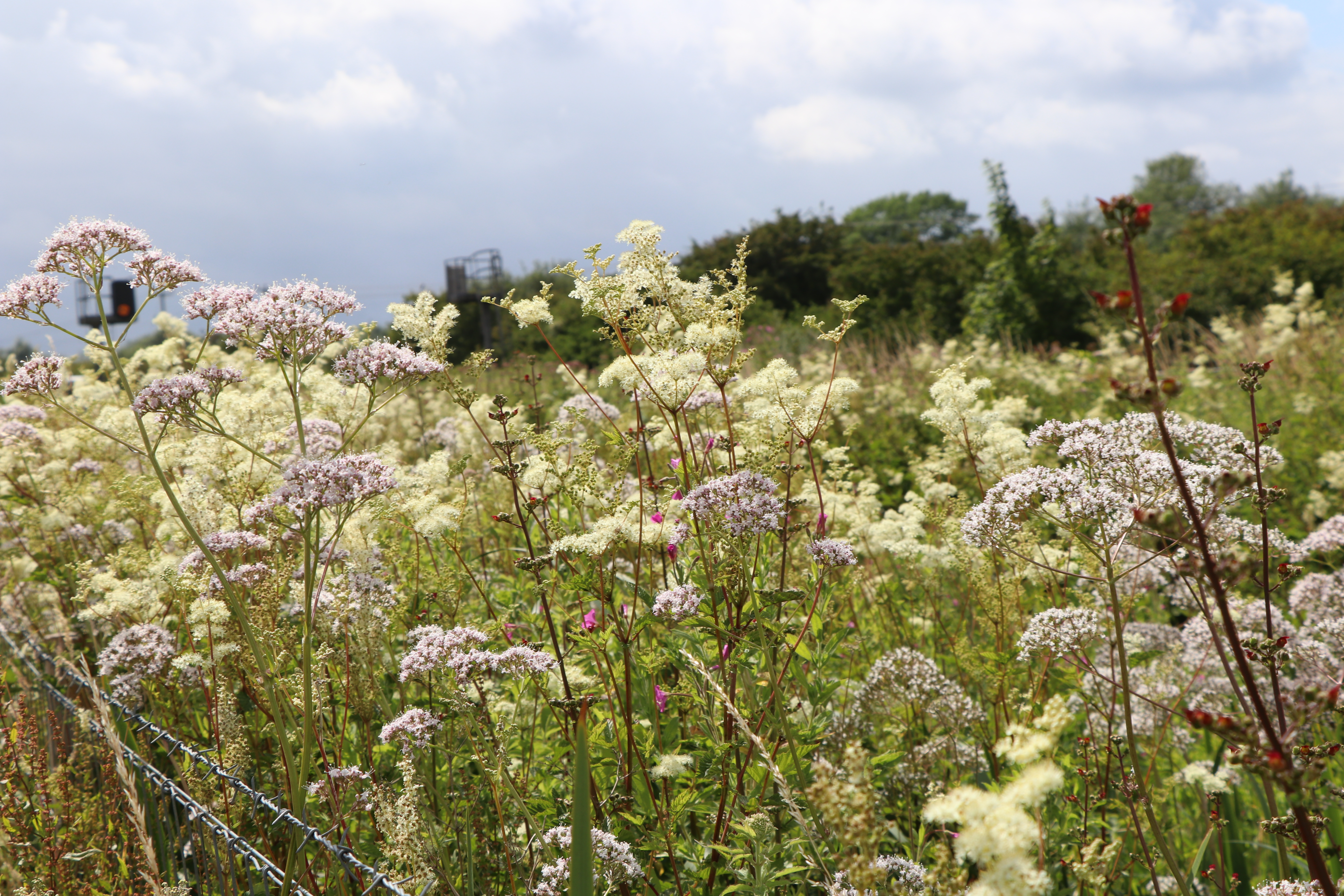The annual cycles of plants growing up then dying back, rising and falling, is determined by the sun drawing the plants upwards...
The benefit from such elevation is improved access to sunlight, improved exposure to wind for pollination and seed dispersal and improved visibility and accessibility to pollinating insects and fruit eating creatures such as birds and humans. There is simply more space when a plant is up; flat ground has only one plane of surface area but by moving upwards, the potential surface area of a plant greatly increases, especially as it branches out. From a small exit point from the soil, emerges an entity which then goes on to present maybe square metres of surface to the sun's light to convert it into food. At the same time, the branches and stems are able to hold out flowers both to a community of bees and other pollinating insects and to wind from every angle; wind carries scents attractive to insects where coloured flowers have failed to do so, and also pollen for wind pollinating plants.
But its up towards the sun, for all our plants, until the peak of summer comes, which is around about now. Hogweed, meadowsweet, wild carrot, mugwort and wild fennel are nearly at their zenith, hogweed and wild carrot a few steps ahead, with their umbrellas (umbels) of white flowers now a major feature of the hedgerows; some hogweed plants having already reached maturity and turned to green seeds, but some plants still with flowers; fennel and mugwort buds are beginning to open.
Over the weeks we have followed the plants upwards, with the softness and sweetness of immature stems providing a delicious edible moment for us to participate in ... Now this moment has all but passed- it has certainly done so for plants whose stems we ate many weeks back such as dock, smooth sow thistle, wild chervil, and alexanders, whose seeds are now fully formed. There is still a bit of tender meristem beneath buds and just-opening flowers, who have not yet reached their destination of full elevation. But on the whole, fibrous vascular bundles- tubes of lignin which carry water- now replace the sweet meristem flesh of stems on the rise, to hold the flowers and then seeds aloft, their flexible rigidity making the whole plants able to dance with the wind without being bent or broken.
The meristem properties of tenderness and sweetness are now transferred to opening buds and flowers and will shortly reappear in unripe seeds for some plants and ripened fruit for others. Fruit or seeds need to be held up to the sun for ripening purposes. Once fully formed and ripened, plants begin their decent again, as seeds and fruit are either plucked and eaten, for seeds to be spat or pooed out elsewhere, blown away by the wind or else simply falling to the ground where the plant stands. Annual and perennial plants also descend, at varying speeds, as they die back and decay and some seeds may descend still attached to the parent plants. Dead stems of hogweed for example may make it into next summer, still with some seeds attached, in places more sheltered and less walked upon. But much as they might buck the trend of the mass of green growth every year, which simply dies down in the autumn, (leaves from trees also)- down they eventually go.
Time lapse photography- or your memory and imagination- reveals an ebb and flow of growth and decay, falling and rising through the seasons. You can imagine it like a tide of greens and browns, greening on the upward flow and browning on the downward ebb. Right now is high tide. The embodied energy of the sun in plant tissues is at its peak, but still straining upwards to its source, to catch the summer light.

